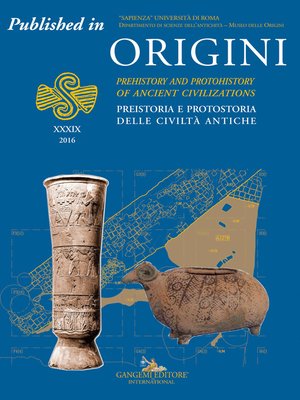The elephant remains from Gavur Lake (South-Eastern Turkey). Restoration and display
ebook ∣ Published in Origini n. XXXIX/2016. Rivista annuale del Dipartimento di Scienze dell'Antichità – "Sapienza" Università di Roma | Preistoria e protostoria delle civiltà antiche – Prehistory and protohistory of ancient civilizations · Origini n. XXXIX--2016
By Fabio Parenti

Sign up to save your library
With an OverDrive account, you can save your favorite libraries for at-a-glance information about availability. Find out more about OverDrive accounts.
Find this title in Libby, the library reading app by OverDrive.



Search for a digital library with this title
Title found at these libraries:
| Library Name | Distance |
|---|---|
| Loading... |
Several subfossil skeletal remains of Elephas maximus asurus were recovered in the western part of the Gavur Lake Swamp during drainage works for agricultural purposes in 1975. They are currently stored in Kahramanmaraş Archaeological Museum and in 2010 a new project was proposed in order to exhibit an almost complete skeleton of an "ancient elephant" in its local context. A skeleton was prepared in 2010-2011 by a team of 15 people during ten months of work. This article describes and shows in detail the materials and the procedures as well as difficulties of restoring, joining and mounting the skeleton currently exposed in the main room of the Kahramanmaraş Archaeological Museum. Elephant remains from Gavur Lake Swamp indicate that at approximately 3500 BP the Syrian elephant (Elephas maximus asurus) populated south-eastern Turkey. The present study also offers a preliminary attempt at contextualising these abundant fossil remains of elephantids in the framework of the history of Bronze and Iron Age Anatolia.







